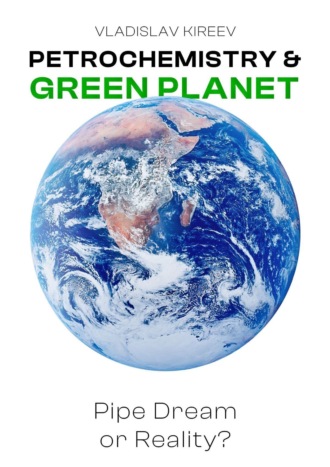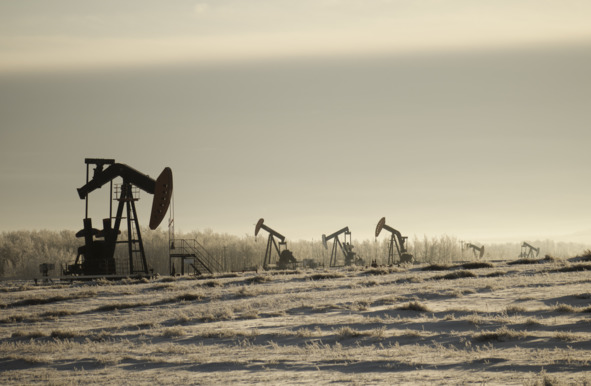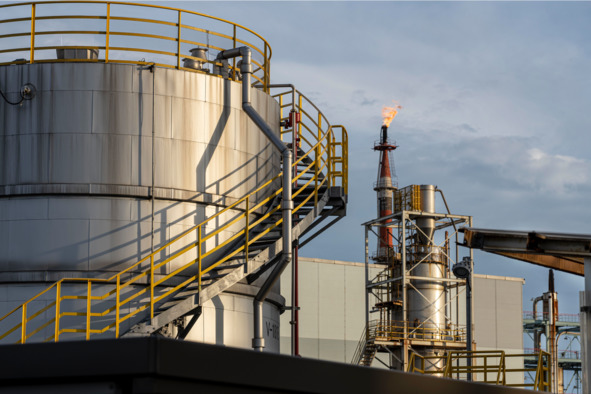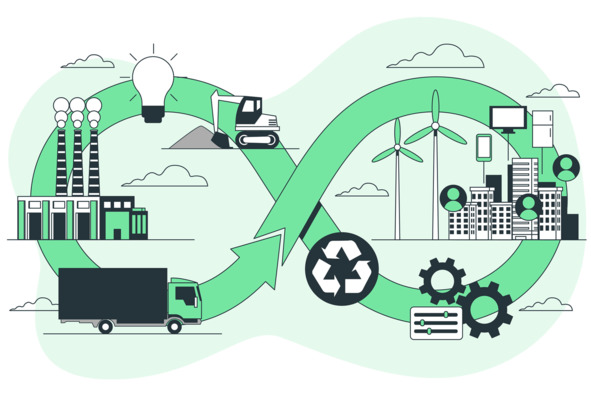
Полная версия
Petrochemistry & Green Planet: Pipe Dream or Reality?

Petrochemistry & Green Planet: Pipe Dream or Reality?
Vladislav Kireev
© Vladislav Kireev, 2023
ISBN 978-5-0060-7762-1
Created with Ridero smart publishing system
Introduction
Petrochemistry is a pivotal industry sector responsible for producing a wide range of chemical products and materials derived from petroleum. On one hand, it is hard to imagine our everyday lives without the contribution of petrochemicals, but on the other hand, the activities of petrochemical enterprises lead to severe environmental consequences, adversely affecting our surroundings and contributing to climatic challenges. This underscores the urgent need for innovative and sustainable solutions within this industry to protect our planet.
In the book “Petrochemistry and the Green Planet: A Distant Dream or Reality?”, we will delve into the intricate world of the petrochemical industry, examining its significance in today’s society and its environmental impact. We then raise the question: Is it possible to harmonize the petrochemical industry with the welfare of our planet?
Throughout the chapters, we will explore various facets of this field. From tracing the historical development of petrochemistry, from its inception and early chemical processes to the contemporary technologies and innovations shaping its future, we’ll highlight its economic role and the latest technological breakthroughs.
The book pays special attention to pressing questions and the quest for answers. We will analyze the petrochemical industry’s impact on the environment, greenhouse gas emissions and pollution of water and soil. Concurrently, we’ll spotlight the ongoing innovations and the green revolution within this sector, investigating the possibilities of rendering petrochemistry more sustainable and environmentally accountable.
The book addresses the intricate challenges confronting the petrochemical industry and offers its readers a myriad of perspectives and solutions to overcome them. We’ll discuss exemplary practices and innovations, as well as the visions of experts committed to fostering a green and sustainable petrochemical industry.
This book serves as a call for deep reflection and dialogue, urging collective efforts to strike a balance between modern society’s needs and caring for the future of our planet. I firmly believe that a green planet and petrochemistry can become a dream turned reality when society recognizes its responsibility towards Earth and unites in pursuit of this objective.
CHAPTER №1
History of the Petrochemical Industry: Environmental and Climatic Impact
The Dawn of the Petrochemical Era
The inception of the petrochemical era is closely tied to the discovery of oil in the late 19th century. It became an industrial raw material for the production of various chemical products for the first time. This pivotal event marked the start of the petrochemical industry’s growth and had a profound influence on the global economy and industry.
Let’s travel back to the late 19th century. The era of initial oil discoveries and the first oil wells emerged in the USA and Russia. One of the most iconic of these ones was the Spindletop oil well in Texas, USA, established in 1901. This discovery was a watershed moment in the development of the oil industry, attracting the attention of investors and entrepreneurs to the prospects of the oil business.

In the early 20th century, the first chemical plants based on oil evolved into one of the industry’s most significant innovations. Scientists and engineers sought ways not just to derive fuel from oil, but also to create other components, breaking new ground for the oil refining and petrochemical industry.
With the advancement of technologies and research, new methods were discovered along with new chemical compounds from oil, such as styrene, a strategically important raw material for producing synthetic rubber. It was first synthesized in 1927, marking a significant milestone in the petrochemical industry. Due to its unique properties, synthetic rubber began to successfully compete with its natural analogue, ensuring itself a strong position in global industrial markets.
Economic Boom of the Petrochemical Industry
The beginning of the 20th century was a time of profound changes in politics, culture, economics, and industry. Petrochemical industry was one of the most striking illustrations of these changes, which underwent incredible transformations during World War I from 1914 to 1918.
Prior to the war, the petrochemical sector was primarily focused on the production of illuminating oils and lubricants. However, the global military conflict required new solutions, ranging from the creation of explosives to modern synthetic materials. This provided a strong impetus for industry development, including research and innovation, laying the groundwork for contemporary petrochemistry.
During the wartime, with the demand for mass resource mobilization, state investments in the petrochemical industry surged. This led to the development of new technologies and equipment, expanded production scales, and consequently reduced production costs. The emergence of the first polymer materials marked a significant breakthrough, considering their extensive application in modern life.
This period is also characterized by exceptional collaboration between the state, scientific institutes, and the private sector. National interests and economic needs converged, allowing the petrochemical industry to make a significant leap forward. In this context, World War I not only became a tragic event in human history but also a catalyst for technological progress. This era can be considered the starting point for the development of the petrochemical industry, which has since continued to evolve, adapting to constantly changing global conditions and challenges.
The mid-20th century emerged as a symbol of the economic rise of the petrochemical industry, a time when enigmatic chemical formulas and engineering calculations became a force shaping the fate of nations and the quality of life for millions. The ever-increasing demand for energy, the widespread use of plastics and synthetic materials, as well as a revolution in pharmaceuticals, propelled petrochemistry to a new level, establishing it as one of the foundations of modern civilization.
During these years, special attention was devoted to the development and implementation of new technologies. The advent of catalytic cracking, deep processing methods, and new types of polymers enabled the most efficient use of crude oil. This led to a reduction in production costs and an expansion of the product range, from household chemicals to aviation fuel.
Due to industrial growth, which brought the petrochemical sector along with it, funds emerged for investment in research and development. Major corporations, such as “DuPont” “BASF” and “Dow Chemical” became innovation leaders, developing products that became daily necessities. For instance, the synthesis of the 66-polymer (nylon), which was first conducted on February 28, 1935, by W. Carothers, the chief chemist of the American company “DuPont.” The broader public was informed about this on October 27, 1938. Nylon became the first mass-produced synthetic material and found widespread use in the textile and other industries, replacing natural materials like silk and cotton. Nylon is actively used in clothing production, especially sportswear and casual wear, as well as in accessories, parachutes, string instruments, cables, and other products. Currently, nylon is one of the most used materials worldwide due to its strength, lightness, and wear resistance.
During this period, there was active government intervention. From infrastructure expansion to the introduction of environmental standards, the state became a key partner of the private sector, providing the necessary conditions for growth and development.
However, this boom did not go unnoticed for the environment and social sphere. The growth in production was followed by increased emissions and pollution, raising concerns about the long-term implications for the ecosystem and human health. Nonetheless, the economic rise of the petrochemical industry in the mid-20th century can be considered a historical moment when technological progress and commercial success converged, defining the trajectory of development for decades to come. This period became a symbol of the opportunities and challenges that the petrochemical sector presented to the world, and whose repercussions we still perceive today.
The plastic industry’s growth was one of the most influential technological and economic processes of modern times. Plastic has a multitude of applications in various sectors, including packaging, automotive industry, construction, medicine, and many others. The first forms of plastics were invented in the late 19th and early 20th centuries, but they gained widespread popularity only after World War II when there was a need for cheap and easily processable materials. The rapid growth of plastic production began in the 1950s, partly due to the rise of the consumer market. Plastic became a symbol of a “fast-paced” lifestyle, offering convenient solutions from food storage and transportation to an extremely broad range of human needs. Over time, more specialized types of plastics with unique properties emerged, including high-strength, heat-resistant, and biocompatible materials. This expanded their use in more technically complex sectors, such as aerospace and medical industries. However, with the growth of plastic production, the environmental issue also worsened. Oceans are filled with plastic waste, many of which do take centuries to decompose. This, in turn, led to the need to reconsider plastic waste management approaches and search for biodegradable alternatives.
In recent decades, the focus has shifted towards the development of biodegradable forms of plastic and efficient recycling methods. There is a growing interest in a circular economy, where the aim is to minimize waste and reuse materials.
In summary, we can say that overall, the plastic industry continues to evolve, adapting to changing technological and environmental requirements.
In the era of globalization, the petrochemical industry stands at a crossroads between boundless opportunities and growing challenges. This process, fundamentally altering the landscape of the sector, is characterized by the expansion of international relations and market integration, inevitably intensifying competition on the global stage. Companies can produce products in one country and sell them in another, taking advantage of the various market benefits from America to Asia. This entire commercial kaleidoscope relies on the formation of global supply chains.
However, the diversity of regulations and standards across different countries presents significant challenges. The heterogeneity of the regulatory framework, especially concerning environmental standards and safety, presents a series of complex questions for the industry. These disagreements become a significant barrier to more sustainable and safe production.
At the same time, globalization becomes a powerful driver of innovation. Technological exchange between countries leads to better efficiency and sustainability of production processes while expanding the product range.
But not everything is so rosy as it first appears. The expansion of production and increased consumption of petrochemical products exert additional ecological and social pressure on the global community. Issues of sustainable development, which were previously just an item on the agenda, now demand immediate action. While globalization intensifies competition, it can also lead to the monopolization of certain market segments. Large international corporations gain the ability to dominate the market, creating risks for small and medium-sized enterprises.
It is critical to remember that globalization makes the petrochemical industry more exposed to global economic fluctuations, raw material price changes, and political risks. Ultimately, globalization is a double-edged process that brings both new opportunities for growth and innovation as well as serious challenges that require coordinated international efforts to overcome.
In a world where the pace of technological progress is astounding, the petrochemical industry is not left behind. This sector, long considered conservative and inert, is experiencing a true renaissance, driven by innovations and the development of new technologies. From artificial intelligence in managing production processes to the development of more environmentally friendly and efficient catalysts, the industry is continuously evolving and offering new solutions to old issues.

First and foremost, let’s consider the digital transformation permeating all levels of production. Artificial intelligence and big data have become key tools for optimizing production, managing supply chains, and even predicting technical malfunctions. Automated control systems significantly reduce losses and increase equipment efficiency, ensuring a stable production economy.
The second major direction is sustainability and ecology. Innovative waste treatment methods, raw material recovery, and by-product utilization reduce the industry’s ecological footprint and make production more economically efficient. Developments in green chemistry allow the replacement of traditional, environmentally harmful processes with safer and more sustainable alternatives.
One shouldn’t forget about the role of the petrochemical industry in creating new materials. Polymers with improved characteristics, biodegradable plastics, highly efficient catalysts – all these are results of meticulous research and experiments, which open new horizons for the application of the industry’s products. However, with the development of technology and innovation new challenges occur, including the need for strict adherence to safety and environmental standards, as well as risks associated with dependence on complex and costly technological processes. In this context, collaboration between scientists, government, and business becomes critically important for further progress. The petrochemical industry stands on the brink of a new era, defined by an unprecedented level of technological maturity and innovative thinking. To fully realize the potential of these changes, it is essential to coordinate efforts of all stakeholders. After all, innovation is not only about technology; it is also about a new perspective on how we see the world around us and the footprint we leave in it.
In today’s world, where economic and social realities largely depend on an invisible network of global relationships, the demand for petrochemical products stands out. It is not just growing but transforming markets, stimulating technological innovations, and influencing the global economy. This growth brings optimism as well as complex questions about sustainable development and ecology.
Initially, it is worth noting that the increased demand for petrochemical products is directly linked to population growth and urbanization. Many of these products, whether they are plastic packaging or synthetic fibers, are an integral part of modern life. They are widely used in medicine, construction, automotive industry, and even in the field of renewable energy. Such growth has a flip side. Environmental sustainability issues become increasingly acute as the production of most petrochemical products is associated with significant carbon dioxide emissions and other greenhouse gasses, and plastic waste continues to pollute the world’s oceans and ecosystems.
The social aspect is no less relevant. While the expansion of petrochemical production contributes to job creation on one hand, on the other, it can lead to social imbalances and strengthen the monopoly positions of large corporations.
Regarding the market, increased demand means increased competition. In this context, petrochemical manufacturers increasingly focus on innovative developments. This involves not just refining technologies but also exploring new, more environmentally friendly production methods, which become a key success factor amidst tightening environmental standards and regulations.
Increased demand for petrochemical products is a phenomenon with both positive and negative implications. It is an engine for innovation and economic growth, yet also a challenge requiring solutions to complex environmental and social issues. As always, at the heart of these processes is the individual – with its needs, ambitions, and responsibility for the planet’s future.
In an era of rapid technological development and economic growth, the petrochemical industry intensifies its impact on the environment. On one hand, this sector is a key element of the modern economy, producing a wide range of goods, from plastics to medicines. On the other hand, the environmental cost of this success is increasingly raising concerns among scientists, ecologists, and activists.
Special attention is paid to harmful emissions into the atmosphere, contamination of water resources and soils, and the formation of toxic waste. The problem becomes even more acute considering the global nature of this industry. Diverse regulatory measures across different countries create additional barriers to environmentally sustainable development. Often, companies shift their operations to regions with less stringent environmental standards, promoting a “globalization” of environmental damage.
Interestingly, the industry is starting to recognize the risks and opportunities that arise in the context of a rapidly changing ecological landscape. Leading companies are increasingly investing in the development of “green” technologies that can mitigate their negative impact on the environment – for example, the use of catalysts to clean harmful emissions and the creation of new biodegradable materials as alternatives to traditional plastics.

Nevertheless, progress doesn’t move as quickly as one might hope. Even the presence of technologies doesn’t always guarantee their practical application, especially in conditions of intense competition and economic costs. Moreover, ecological safety issues often become subjects of political debates and negotiations, complicating the adoption of coordinated international decisions. The impact of petrochemical companies on the environment is a complex and multifaceted issue, requiring collaborative efforts at state, corporate, and civic levels. In this context, technological and ethical challenges become more distinct. The ability of modern society to address these challenges will determine the world in which future generations will live.
Let’s examine in more detail the impact of petrochemical productions on ecosystems, starting from oil extraction to the release of the final product.
In the modern world, oil is rightly considered “black gold,” serving as a key energy source and the foundation for a wide range of production processes. However, the growing interest in ecology and sustainable development raises questions about the ecological cost of extracting this resource.
From the onset of industrialization to the present day, ecosystems around oil-producing regions have been significantly impacted. It all starts with geological exploration, followed by extraction, transportation, processing, product use, and ends with its disposal. At each stage, specific environmental risks arise. Let’s consider, for example, the initial stage of geological exploration.
Oil exploration is the initial stage in the oil industry, but even at this point, it significantly impacts the environment and ecosystems. This process often begins with deforestation and the destruction of natural vegetation, inevitably leading to a loss of biodiversity and imbalance in ecosystems. Ecological changes are exacerbated by the chemical pollution of nearby water bodies that occur during seismic studies and other forms of exploration. These chemicals penetrate the soil, altering its quality and making it unsuitable for future agricultural use.
Machinery and equipment used in exploration emit exhaust gasses that severely contribute to atmospheric pollution, and alongside, the high noise levels associated with exploratory activities adversely affect the surrounding fauna and even humans. Furthermore, there is always the risk of accidents, which can have catastrophic consequences for the adjacent nature. And of course, the exploration process itself is energy-intensive, only adding to and exacerbating environmental problems. In conclusion, the social aspect should be highlighted when the degradation of water, soil, and air due to exploration activities leads to protests from local communities suffering from environmental impacts.
All these factors demand a comprehensive and responsible approach to the exploration process. Minimizing the negative impact on nature is possible only with strict adherence to ecological standards, the use of environmentally sustainable technologies, and the active involvement of local populations in making ecologically significant decisions.
Recall the large-scale oil spills, such as the tragedy of the “Exxon Valdez” in Alaska or the disaster of the “Deepwater Horizon” platform in the Gulf of Mexico, which became a stark reminder of how far-reaching the consequences can be. Such catastrophes destroy local ecosystems and disrupt the ecological balance in the region for decades.
However, these are precisely crises and disasters that prompt reflection and action. In recent years, more attention has been given to the development of new, safer, and more efficient oil extraction technologies. Methods are emerging to minimize environmental damage, improve waste purification systems, and low-emission technologies.
Nevertheless, the presence of technologies does not guarantee their application. Environmental safety issues often clash with economic interests and political ambitions. Here, international regulations and agreements play a particular role, but their effectiveness heavily depends on the country and the specifics of local ecosystems. Oil extraction and its impact on ecosystems is not just a technical issue, but also a profoundly ethical question facing humanity. In this realm, a balance between economic needs and environmental responsibility is necessary, which requires the concerted efforts of all parties – from governments and corporations to civil organizations and every individual.
In the global agenda, issues of climate change and environmental sustainability are becoming increasingly relevant. As research shows, the petrochemical industry is one of the main “drivers” of climate change. At the production facilities of these companies, processes like cracking, alkylation, and hydro-refining take place, releasing significant volumes of greenhouse gasses. It is no surprise that the activities of these companies are at the center of lively debates regarding their impact on global climate change.
Greenhouse gas emissions, primarily carbon dioxide, methane, and nitrogen oxide, lead to the warming of the Earth’s atmosphere, changing weather conditions, and intensifying extreme climatic events. The consequences can be diverse, ranging from the melting of polar ice and glaciers on the polar coast to the spontaneous emergence of natural disasters like hurricanes, storms, and floods.
However, there is good news. Many companies have already realized their environmental responsibility and are actively investing in new technologies to reduce emissions. The use of catalysts, the installation of carbon capture and storage systems, and transitioning to alternative energy sources are just some of the steps being taken in this direction.
Nevertheless, the problem remains acute and requires coordinated efforts at the global level. Simply introducing new technologies is not enough; an active role of states and international organizations in regulating and overseeing the activities of petrochemical companies is essential.

